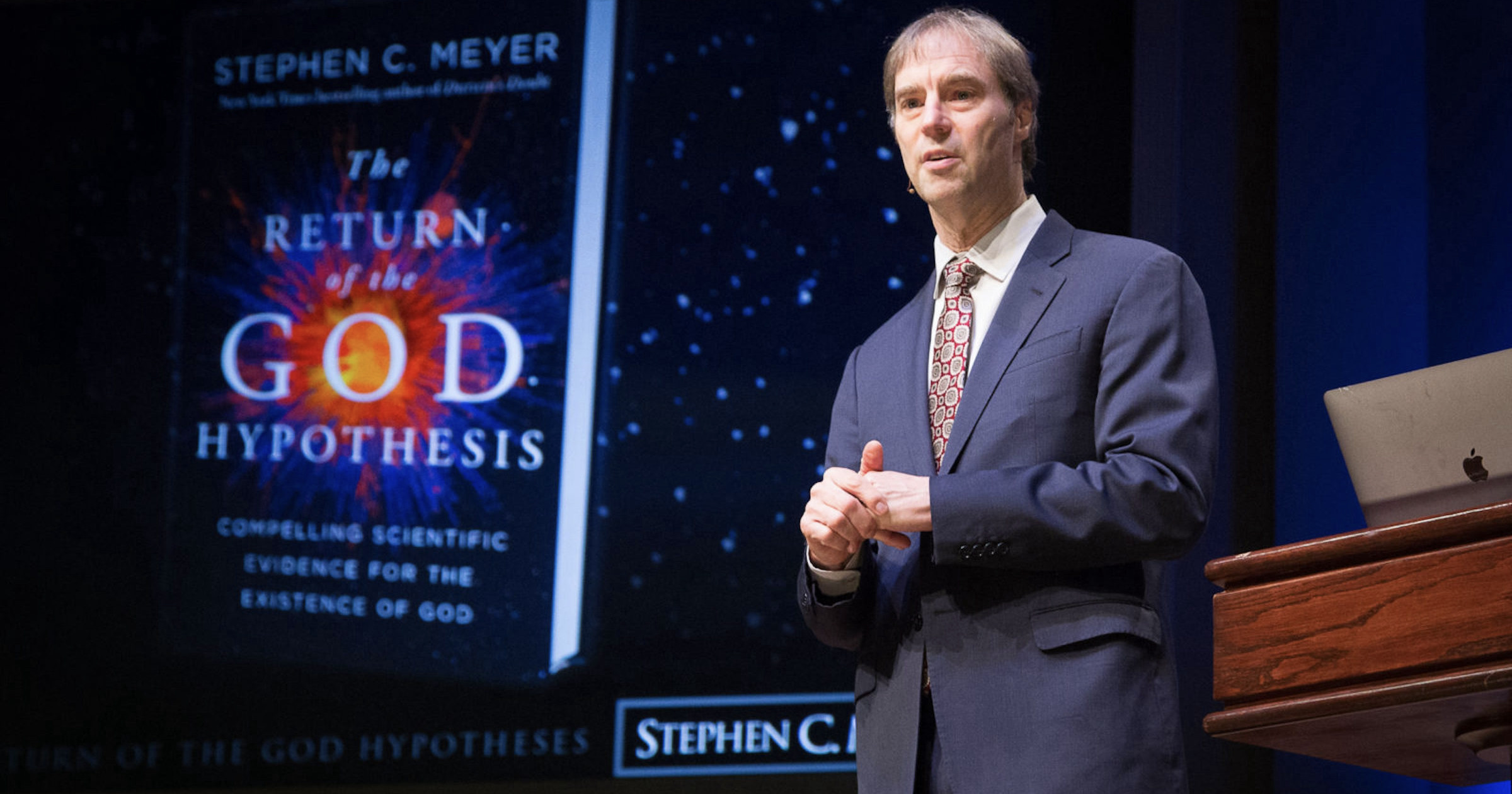 Evolution
Evolution
 Intelligent Design
Intelligent Design
 Physics, Earth & Space
Physics, Earth & Space
Critics Respond to Stephen Meyer’s New Book (Without Mentioning Him by Name)

The website Big Think recently published an article by Ethan Siegel titled “Surprise: the Big Bang isn’t the beginning of the universe anymore.” Siegel is a theoretical astrophysicist and a science writer. He is also an atheist, so he understandably does not like the implications of the universe requiring a beginning. He does not mention Stephen Meyer by name, but he seems to directly engage Meyer’s recent book Return of the God Hypothesis, arguing that modern theories of cosmology suggest the universe did not have a beginning but is eternal.
He Who Shall Not Be Named
Contrary to Siegel’s claims, Stephen Meyer demonstrates in his book that scientific evidence discovered over the past century decisively points to the universe having an absolute beginning. The beginning is often termed a singularity since it would correspond in the standard Big Bang model to a state approaching an infinite temperature in an infinitesimally small volume. Meyer also argues that the evidence for such a beginning, combined with other data, strongly suggests that the universe was created by the God of the Jewish and Christian Scriptures (here, here, here).
Since the book’s release, many stories have appeared in varied publications challenging his claims. The articles often do not mention Meyer by name, but their content suggests that they are attempting to disprove his design thesis. A similar phenomenon occurred after the publication of his previous books, especially Darwin’s Doubt. The critics appear to see Meyer much like Voldemort in the Harry Potter series. He is ever present in their minds, but Meyer is “he who shall not be named.”
Siegel’s Argument
Siegel attempts to find a loophole for the conclusion of a cosmic beginning by appealing to the theory known as eternal chaotic inflation. Inflationary theory was initially developed to explain the fine-tuning implied by the “flatness” of space and the near perfect uniformity of the cosmic microwave background radiation (CMBR). The flatness represents the lack in curvature of space that the theory of general relativity would normally predict. According to the standard Big Bang model, the lack of curvature required the mass density of the early universe to have been fine-tuned to greater than 1 part in 1060 (a 1 with 60 zeros behind it).
Inflationary theory attempts to explain the flatness of space and the uniformity of the CMBR without the need for such extreme fine-tuning. It postulates a field permeating space that causes the universe to expand at a phenomenal rate. The earliest versions assumed that the expansion occurred a tiny fraction of a second after the Big Bang and only lasted for an exceedingly short period. This expansion purportedly flattened space and generated a CMBR with the observed uniformity.
The theory was later modified to posit an eternally inflating space. Different regions of space stop inflating due to a spontaneous drop in the inflationary field’s energy, and they then expand according to standard Big Bang models. Our universe resulted from just such a region exiting inflation. The key point for Siegal is that most of space could have been expanding eternally, thus removing the necessity of a beginning. As Siegel comments,
Due to its exponential nature, even if you run the clock back an infinite amount of time, space will only approach infinitesimal sizes and infinite temperatures and densities; it will never reach it. This means, rather than inevitably leading to a singularity, inflation absolutely cannot get you to one by itself. The idea that “the universe began from a singularity, and that’s what the Big Bang was,” needed to be jettisoned the moment we recognized that an inflationary phase preceded the hot, dense, and matter-and-radiation-filled one we inhabit today.
Unfortunately, Siegel’s claim was completely discredited by the research of leading cosmologists Arvind Borde, Alan Guth, Alexander Vilenkin. They developed the Borde, Guth, Vilenkin (BGV) theorem that demonstrates that all universes, which are on average expanding, must have had a beginning. Our universe falls into this category, so it must have had a beginning even if eternal inflation were true. Meyer explicitly makes this point in his book:
In any case, by the early 1990s, many physicists had embraced eternal chaotic inflation as the best model for the origin of the universe. The popularity of the model led two physicists, Arvind Borde and Alexander Vilenkin, of Tufts University, to investigate what inflation implied about whether the universe had a beginning. They sought to investigate whether the inflaton field could have been operating for an infinitely long time back into the past — that is, whether it could have been “past eternal,” as they phrased it. Within a decade, Borde, Vilenkin, and a third physicist, Alan Guth, one of the original proponents of inflation, had come to a startling conclusion: the universe must have had a beginning, even if inflationary cosmology is correct.
Return of the God Hypothesis, p. 125
A Common Pattern
Siegel is following in the same path as other critics in presenting arguments that Meyer has already dismantled. He is so desperate to maintain his materialist philosophical framework that he is unconsciously suppressing key evidence that undermines his attempts to avoid the clear evidence of design throughout creation.
